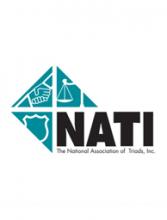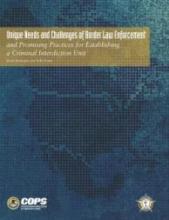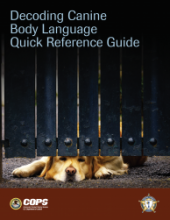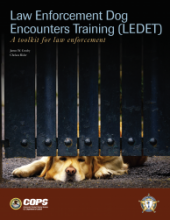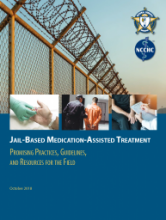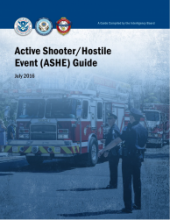Since December 2018, the National Sheriffs’ Association (NSA) and the U.S. Department of Justice (DOJ) Office of Community Oriented Policing Services (COPS Office) have been hosting and actively participating in meetings with border sheriffs to discuss their unique needs and challenges. The purpose of these meetings was to provide the NSA, the COPS Office, and other DOJ stakeholders with a better understanding of border security needs and to identify gaps for personnel and equipment, as well as training and technical assistance.
More than 130 people participated in three roundtable and focus group discussions. The first meeting, held in December 2018 in Rockwall, Texas, featured a roundtable of Texas sheriffs discussing their need for support and equipment needs, funding opportunities, personnel shortages, and operational control. Promising practices discussed included an introduction to the North Texas Criminal Interdiction Unit (NTXCIU).
Continuing the conversations, the NSA and the COPS Office called on the Southwestern Border Sheriffs’ Coalition (SWBSC) to participate in two focus group sessions facilitated by NSA, the COPS Office, and CNA on next steps. The first focus group session took place during the Western State Sheriffs’ Association meeting in Reno, Nevada, and the second, in which the U.S. Department of Homeland Security (DHS) also took part, at the SWBSC annual conference in Del Rio, Texas. They continued the discussion of the DOJ and DHS’s commitment to supporting sheriffs. Federal representatives presented on initiatives and projects being deployed to meet the needs of sheriffs.
Throughout these meetings, border sheriffs made it clear that they were facing a number of challenges. Participating sheriffs agreed that they could always use more training and would continue to accept any training opportunities that were made available. They responded well to the NTXCIU presentations where they gained knowledge on basic criminal interdiction and how to build a criminal interdiction unit. Participants also discussed their need for more technology, such as automatic license plate readers and x-ray machines.
To allow sheriffs who had not participated in the roundtables an opportunity to voice their needs, the NSA, in coordination with the COPS Office, sent a needs assessment to northern and southwestern border sheriffs to gather a comprehensive list.



